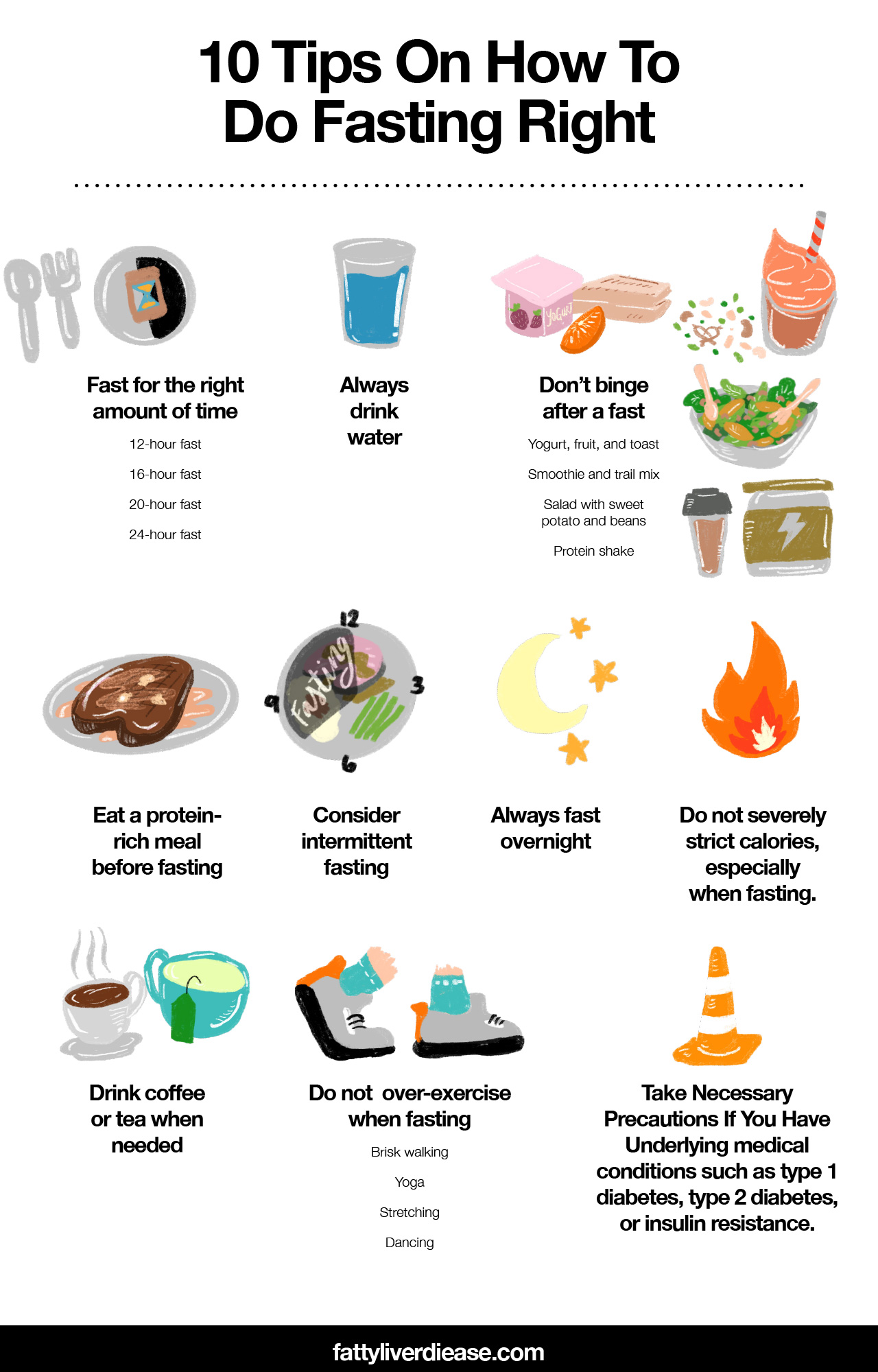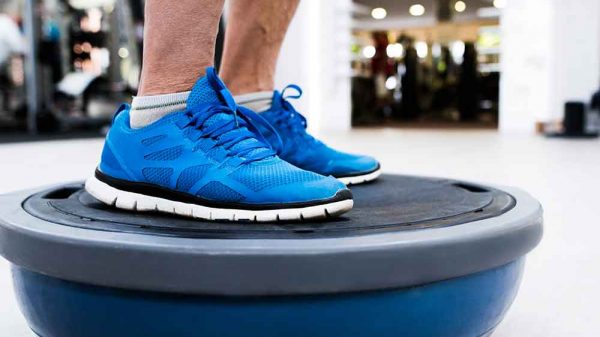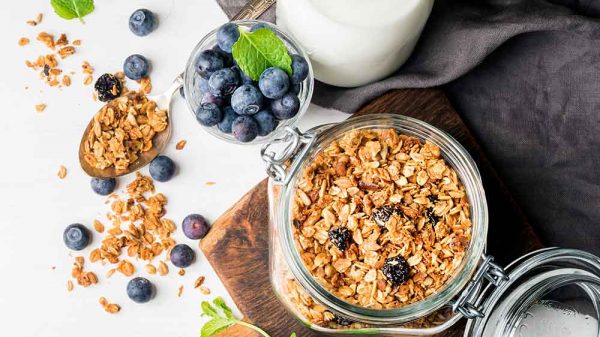In the last decade, intermittent fasting and similar practices have become all the rage. But why? What exactly is fasting and how is it useful? If you’re considering adding fasting to your lifestyle, keep reading to find out the top 10 fasting tips to support your health.
What Is Fasting and Why Do It?
Fasting has become a popular trend and means that you avoid eating for a certain period of time. Individuals on the keto diet sometimes use fasting to jump-start ketosis and raise their blood ketones and fat-burning capacity. Regardless of the diet plan that you’re following, fasting is an effective way to reset the digestive system and jump-start weight loss, and long as it’s done correctly. Fasting can help you maintain healthy body weight and lose body fat.
Science backs up the benefits of fasting. Research reveals that fasting amps up the metabolism, fights weight gain, slows down degenerative processes associated with aging, and exerts protective effects against metabolic conditions and cardiovascular disease. (1)
So, what’s happening on a molecular level during a fasting period? When you’re fasting, the digestive system doesn’t require energy to break down foods. As a result, the body can channel energy towards other areas of the body, promoting repair, cleaning up waste, and lowering oxidative stress.
Fasting has also shown promise in reversing fatty liver disease specifically. A study conducted by researchers in Germany and Switzerland analyzed the impact of periodic fasting on 264 individuals with fatty liver disease. Results showed that periodic fasting significantly reduced BMI and reversed fat accumulation in the liver. The researchers suggested that fasting may have a promising role in effectively and efficiently treating metabolic syndrome and fatty liver disease. (2)
Do you think fasting might be right for you? Try out the intermittent fasting tips below to make sure you’re fasting safely and getting all of the benefits that fasting has to offer.
1. Fast for the Right Amount of Time
Fasting time is not one size fits all. For some, an overnight fast may be all you need. For others, a 24-hour fast might be the best length of time. The key is to experiment with what works best. If you’re interested in doing longer fasts, first try out shorter fasts to see how your body feels. Then, work up to a longer period of time.
Try these options:
- Fasting for 12 hours: If you fast for 12 hours, this means your meals are spaced out throughout the remaining 12 hours of the day. To complete a 12-hour fast, start by having a normal breakfast and lunch at your usual times. Then, try having an earlier dinner, around 6 pm in the evening. For the remainder of the evening avoid snacks until you go to bed. When you wake up the next morning, aim to eat breakfast at 6 am or later.
- Fasting for 16 hours: Another common fasting time period is 16 hours, allowing for food to be consumed during the remaining 8 hours of the day. As with the 12-hour fast, it’s easiest to allow the 16-hour fast to occur during the hours you’ll be sleeping, which is when you’d naturally fast anyways. Also similar to the 12-hour fast, aim to eat an early dinner, close to 6 pm in the evening. When you wake up, delay breakfast until 10 am.
- Fasting for 20 hours: For a 20-hour fast, this means you just have a 4-hour eating window. Aim to eat your latest meal around 3 pm in the afternoon. When you wake up the following morning, put off breakfast until 11 am. If you have trouble sleeping on an empty stomach, eat your latest meal later and the next day simply waits a bit longer before eating.
- Fasting for 24 hours: To fast for an entire day, you have a meal and don’t eat until the same time the following day. Methods for completing a 24-hour fast depend on your preferences. Some like to start after breakfast, while others start their fast after dinner.
2. Always Drink Water
Can you drink water while fasting? Absolutely. In fact, you should drink water throughout the fasting period. Your fasting period could actually be referred to as water fasting, instead of complete fasting. Staying hydrated is important for keeping cellular functions moving throughout the fasting period. Drinking enough water is crucial to flush toxins and waste products out of your body, and to keep your blood level and blood pressure at healthy levels. Drinking water will also help satiate an empty stomach and make fasting more tolerable.
Without enough water during a fast, you are at a higher risk for low blood pressure and low energy, and you are more likely to experience fatigue and exhaustion.
3. Don’t Binge After a Fast
There’s no doubt about it; fasting is tough. Going many hours without food can leave you feeling starved when the fasting period comes to an end. However, the key to gleaning the health benefits from fasting is to avoid binging or overeating and to instead continue healthy eating patterns. Keep in mind that cyclically binging and fasting is indicative of an eating disorder.
Plus, eating a huge meal after fasting can overwhelm the digestive system, leaving you feeling uncomfortably full or with a stomach ache. Instead of a large, heavy meal, opt for a light, nutrient-dense meal.
Here are a few ideas for what to eat after fasting:
- Yogurt, fruit, and toast: For an easy meal that provides lots of micronutrients and macronutrients after a fast, go for nonfat Greek yogurt topped with blueberries and strawberries. On the side, enjoy a piece of whole-grain toast with peanut butter.
- Smoothie and trail mix: Blend up a smoothie with frozen banana, mango, raspberries, and low-sugar soymilk. For extra protein, add in a high-quality essential amino acid supplement. Munch on a handful of trail mix including pecans, walnuts, and dark chocolate for healthy fats and antioxidants.
- Salad with sweet potato and beans: A big salad with sweet potato and beans can help restore micronutrients and fill up your stomach without too many calories. Top a chopped kale salad with roasted sweet potato, chickpeas, chopped tomatoes, avocado, and crushed walnuts. Drizzle with a vinaigrette dressing.
- Protein shake: A nutrient-dense protein shake might be just what you need to re-feed your muscles and get your body prepped to start eating. Try preparing a smoothie using frozen banana, ground flaxseeds, unsweetened soymilk, and chocolate protein powder or essential amino acid powder.
4. Eat a Protein-Rich Meal Before Fasting
Protein is crucial for protecting your muscles and protein synthesis during a fast. Protein is made of amino acids, which are often referred to as the building blocks of protein. When you eat a meal rich in protein, the digestive system is responsible for breaking down protein into individual amino acids, which can then be absorbed by the intestine. The amino acids are then shuttled throughout the body and used for various biological functions.
In particular, our bodies require essential amino acids from the foods we eat. While we can manufacture all nonessential amino acids internally, we must eat proper amounts of essential amino acids on a daily basis.
Before starting a fast, make sure that your last meal provides optimal ratios of essential amino acids, to help maintain lean body mass throughout the fast. Animal protein sources contain ideal ratios of essential amino acids, while to get ideal ratios from plant proteins, you generally need to eat a variety of whole grains, beans, nuts, and seeds.
For example, enjoy a salad for dinner with romaine lettuce, tomatoes, avocado, and grilled chicken. A plant-based meal that offers all essential amino acids may look like a scoop of brown rice, black beans, grilled tofu, and sautéed kale. Alternatively, using an essential amino supplement can help eliminate the need to carefully plan out meals.
5. Consider Intermittent Fasting
You may have heard the term “intermittent fasting.” This simply means that you incorporate a regular pattern of fasting into your eating routine. For example, maybe this means each week you incorporate alternate day fasting into your routine and designate Tuesday and Thursday evenings for your 12-hour or 16-hour fasts.
Intermittent fasting works by keeping your metabolism on its toes. By cyclically varying your food intake and periods of fasting, your metabolism has time to rest in between periods of food intake. This contributes to a state called metabolic confusion and helps you avoid the sluggish metabolism and “plateau” that people experience with sustained low-calorie diets.
When done right, intermittent fasting results in higher fat-burning capacity, weight loss, and better metabolic health.
6. Always Fast Overnight
While you’re sleeping, your body is naturally fasting, so it’s easiest to take advantage of the seven or eight hours (on average) that you are asleep. This is more effective and works with your body’s metabolic patterns and sleep cycle.
For example’s sake, let’s say you do a 12-hour fast during the day. This means you might have your last meal at six o’clock in the morning and avoid eating until dinner time at six o’clock or later. Your body is utilizing lots of energy during the day while you’re working, thinking, exercising, and conducting other normal daily activities. Not eating raises the likelihood of feeling grouchy, having low blood sugar, and experiencing an energy crash.
7. Do Not Severely Restrict Calories, Especially When Fasting
In general, following a very-low-calorie diet is not advisable, unless specifically prescribed by your doctor for your specific health needs.
A very-low-calorie diet, especially when combined with fasting, can be very dangerous for your health. Extreme calorie restriction puts you at risk for nutrient deficiencies and rapid weight loss that can lead to gallstones and muscle wasting.
8. Drink Coffee or Tea When Needed
Especially if you’re doing a longer fast, with a 16-hour or 20-hour fasting period, it can be tough to get through the morning hours with no fuel to kickstart your day. Coffee or herbal tea provides a boost of caffeine to help tide you over and keep your energy up until you eat breakfast. Coffee and tea, have antioxidant properties that can lower inflammation in the body, quell oxidative stress, and even help reverse fat accumulation in the liver.
During a fast, just be sure to enjoy your coffee and tea without adding sugar and cream. If black coffee is absolutely unbearable, adding a little bit of skim milk or plant-based milk is ok.
9. Do Not Over-Exercise When Fasting
This isn’t to say you shouldn’t exercise at all when fasting. Some fitness professionals tout the efficacy of fasted cardio. However, if you’re engaging in fasted cardio, you are probably at the end of a 12-hour overnight fast and can eat immediately following a workout.
The key is not overdoing it, especially during longer fasts. For example, don’t try high-intensity interval training (HIIT) 15 hours into a 24-hour fast. You have a greater chance of feeling fatigued and unwell during the workout, which isn’t healthy. Your body and muscles require glucose to perform and essential amino acids from protein to repair. By pushing yourself to engage in high-intensity exercise without proper fuel, you won’t be able to perform at top capacity and get the most out of your workout. More importantly, inadequate fuel before and after a workout means you’re more likely to be sore after a workout, and the risk of injury is higher.
Healthy forms of physical activity during a fast include:
- Brisk walking
- Yoga
- Stretching
- Dancing
10. Take Necessary Precautions
If you’re trying out fasting for the first time or you want to try a longer fast, it’s best to check in with your doctor first to make sure that fasting works for your needs. This is especially important if you have underlying medical conditions that impact your blood sugar, such as type 1 diabetes, type 2 diabetes, or insulin resistance. When you have such conditions, it’s important to ensure that your blood sugar levels don’t rise too high or dip too low.
Even if you’re not diabetic, fasting could still raise your risk of a hypoglycemic episode. If you start to feel shaky and sweaty and your heart rate goes up, your blood sugar levels may be lower than the normal range. If this happens, drink a small glass of orange juice or eat a piece of fruit and see how you feel.
If you feel your blood pressure dipping, sip on a little bone broth or water with added electrolytes.
Finally, never ignore your body’s signals. If you start experiencing unpleasant symptoms while fasting that go beyond normal hunger pangs, it’s best to eat and get medical care if needed.
Fasting Tips: Conclusion
Fasting is not a substitute for following a healthy overall diet, but it can be an additive strategy for supporting weight loss goals and keeping your metabolism in check. Following the fasting tips mentioned above, can make fasting an excellent way to support your metabolism, lower inflammation, and fight against aging and disease.

References:























